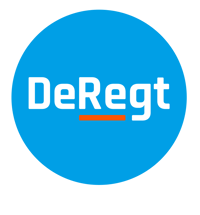Improving the performance and cutting the cost of deploying work-class ROVs – two key priorities for manufacturers and operators of remotely-operated vehicles, both of which DeRegt is addressing with its new cable solutions.
The challenges
- ROV Manufacturers want to make submersible ROVs that can dive deeper, and they require stronger, lighter cables. Which is exactly what DeRegt delivers.
- ROV Operators want to save money when replacing ROV tether and umbilical (main lift) cables. DeRegt supplies these aftermarket products at competitive prices.
Either way, customers are on familiar ground because DeRegt (part of the Sercel Group) has long been known for its innovative cable solutions for the entire offshore world. The firm supplies cables and terminations for the seismic industry, naval defense and the oil and gas sector. It has also made a name as a maker of high-quality umbilicals and tethers for ROV manufacturers like Saab (Saab Seaeye) and the Fugro ROV division.
Additionally, it serves a broad group of operators who use such vehicles for various purposes. Peter Brussee is Sales Manager for the oil and gas sector at DeRegt, with his portfolio also including the ROV Cables division. He and his team are working constantly on new solutions for manufacturers and operators: two very different markets, each presenting its own specific challenges. We asked Peter about the latest market developments, the particular requirements of his various customer groups and how DeRegt responds to their differing needs.
Peter, can you tell us more about the ROV cable solutions DeRegt currently offers?
It’s a very diverse range. Given our design capabilities, we have always focused on high-end solutions. These range from cables for ROVs operating at very great depths to those for vehicles like trenchers, which require a lot of power and therefore need a connection which can relay that.
In addition, a product line has been established to provide conventional work-class ROVs with the most suitable connections.
Manufacturers are developing ROVs to dive to ever greater depths. What solutions does DeRegt offer for these challenges?
We learn from the operators, in particular, that it is important for them to be able to reach deeper water, while still using their existing systems.
The benefits of a cable capable of this lie in its own weight.
So, an improved cable design with a working depth of 4 kilometres may be no heavier than its predecessor with 3 kilometres of unrolled weight. In other words, you can go a kilometre deeper with, ultimately, the same weight up top.
This means that the winch system – a costly piece of equipment – does not have to be replaced; you only need to install the new “drop-in” cable.
Another advantage when working at a certain depth is the additional lift capacity of the cable, useful when salvaging equipment from the sea floor with limited time. And at the operational level there is greater flexibility when shipping a modular winch system, say, in a container. A lighter cable allows for a heavier winch or keeps down the total weight.
At DeRegt, one aspect we look at is what can be done with steel wires with high tensile strength. In consultation with the customer, there are often gains to be made once the overall specifications of the vehicle are known and when it is clear how it is to be used operationally.
A second option is to work with materials that have a higher tensile strength and better weight properties. These can be combined with steel, but also used on their own.
Whatever the case, we regard thorough engagement with the customer as key.
Properly understanding the system and how it is intended to operate in the field is half the work in the development process.
Can you name one of your ROV-manufacturer customers and explain how DeRegt has made a difference for them with tailor-made cable solutions?
DeRegt has developed a tether for Saab which can be used at very great lengths with an ROV in free-flying mode. To create this, we conducted in-house research to determine the best combination of materials.
Outer-diameter tolerances are always very tight, so in the trade-off it is vitally important to optimise every aspect: choice of materials, interaction between insulation with element strength, insulation thicknesses, and the right type of copper.
Another example is an extensive qualification programme we have undertaken for Fugro. It is important to ensure that the operational lifetime is as long as possible, and in this respect, too, there are possibilities to “play” with different materials. Certain types of copper, for instance, are more resistant to repeated bending of the cable.
Why should ROV manufacturers come to DeRegt?
At DeRegt they hear an honest story and get a technically sound solution. We are prepared to go a long way for our customers, in the sense that we conduct a complete programme of tests in consultation with them. Our ethos is to provide the best technical solution, and even if it that proves difficult never to shy away from the challenge. Instead, we work with the customer to find the cause and overcome it. Our ultimate goal is to build a long-term relationship with the customer, not just as a supplier of products and solutions but as the service provider and technical sparring partner they are so often looking for.
Operators are interested mainly in the cost of cables. Why choose a DeRegt aftermarket cable over one from the ROV’s original manufacturer?
In the aftermarket, too, DeRegt can supply a product fit for purpose in combination with the appropriate level of service. If desired, for example, a cable wound onto a reel with a set pre-tension. We also offer the opportunity to arrange a call-off programme at the end-product or material level, so as to shorten delivery times and meet urgent requests as quickly as possible. Moreover, our field service engineers are trained to assist with product installation and to carry out so-called health checks.
DeRegt is committed to continuous improvement and innovation, which is only possible if we work closely with operators. By sharing operational logging data, for example, and information on working conditions. The findings these generate in such areas as fatigue and duty cycles can be incorporated into further product innovations. In short, we try to support the operator within our portfolio in order to make their work as efficient as possible.
Less downtime due to failures results in a lower TCO. Can you explain this?
I think I’ve already partly answered this question, but to go into it further:
the total cost of ownership is important in every operation. Ultimately, the operator wants to hold on to more money from any job. Or, of course, be more competitive in order to improve its market position.
With our cables and terminations, in that respect DeRegt can make a positive contribution and offer a technical solution.
Once again, I want to underline how important the very beginning is. Understanding the situation and clarifying customer’s wishes are the solid foundation upon which we build our solutions. The best cases I can recall all originated in a clear, honest way of doing business. You sometimes encounter hurdles along the way, but these often trigger a steep learning curve and only benefit the end product.
That is advantageous for DeRegt, and ultimately for the customer as well. Which is what we are after: a satisfied customer and a long-term relationship.
On the website, you challenge ROV manufacturers and operators to “always team up with DeRegt”. Why?
DeRegt itself wants to take on a challenge: to somehow always deliver an extra benefit. In that respect, the challenge lies with the customer to take a critical look at their own systems, as often a change is the basis for the queries we receive.
We can identify three situations.
- The customer wants to stay ahead of the competition by making a change.
- The customer realises that if nothing is done now, they will soon lose the upper hand.
- The customer is comfortable in their current position.
In the first two scenarios, we can of course respond immediately with a review to see where there are gains to be made so as to strengthen the customer’s position.
The third case is more difficult, but we would still like to ask people to challenge us, as this could result in increased total benefits of ownership. Check our dedicated ROV page.
Can you tell us more about the fibre-optic heat measurement which makes cables last longer?
We are seeing more and more demand from the market to introduce sensors into our cables. The reason for this is risk mitigation, which is partly necessary due to the constantly increasing power consumption.
If an operation has to be suspended for repairs for days or even a week because of an equipment overload, you can imagine how much that is likely to cost.
Together with our partners, DeRegt can offer solutions to monitor the cable temperature. If required, this can be linked to a usage profile to keep the operation within the correct parameters and so ultimately extend the cable’s lifespan.
Not insignificant in this respect, too, is the potential to adjust the entire set-up and perhaps thereby increase lift capacity even further thanks to an improved ratio of copper to steel.
Feel free to contact us to find out what this could mean for your design. We are happy to accept the challenges.
At what upcoming events can ROV manufacturers and operators meet DeRegt?
We will be at all the following trade fairs: Oceanology International 2020 in London, ONS in Stavanger and Offshore Energy in Amsterdam. In short, enough chances to talk to us. Alternatively, you are always welcome to visit our design team and take a look at our production facility near Rotterdam in the Netherlands.




